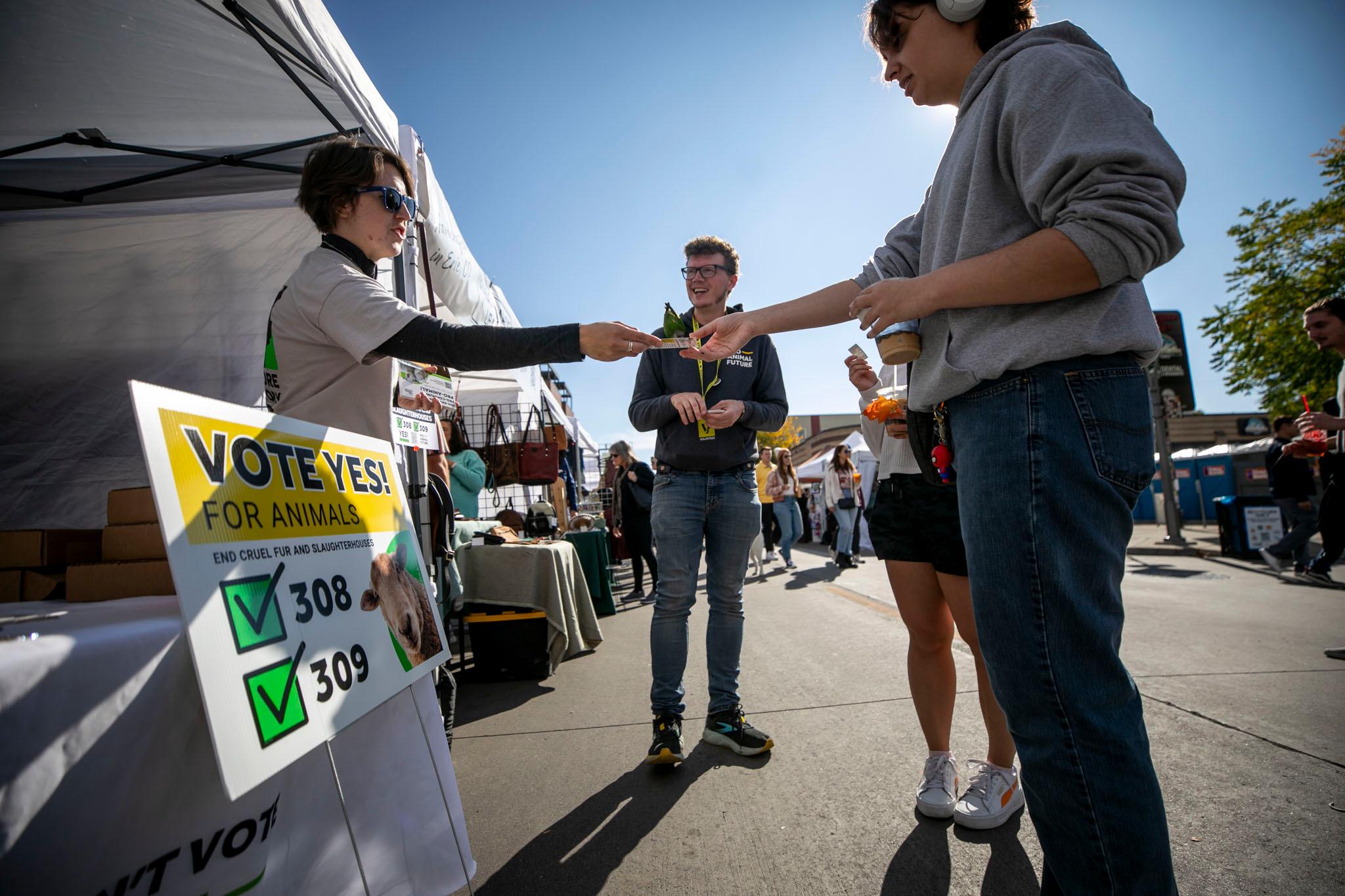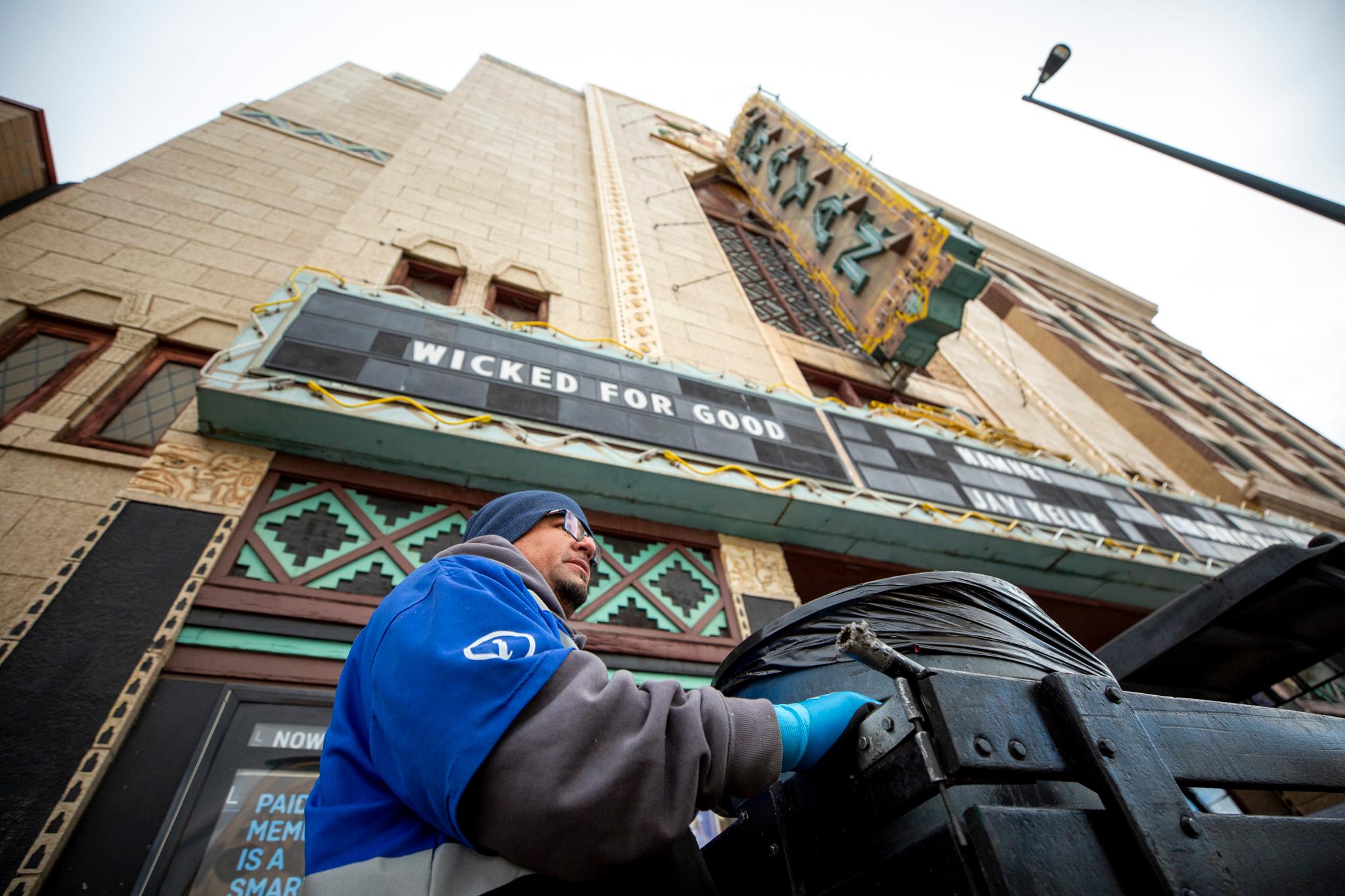Denver Art Museum visitors will be greeted by a huge, horned, googly-eyed creature as they make their way upstairs this winter.
To those in the know, this particular monster is known as Moishe. To the rest of us, it's simply one of Maurice Sendak's Wild Things, from his 1963 story about a boy who becomes the king of the beasts' liminal world.
"Wild Things: The Art of Maurice Sendak" opens Sunday, Oct. 13, and runs through Feb. 17, 2025.

It's the first time all of his original illustrations for the book that made him famous are on display in one place, but the retrospective goes far beyond that piece of his career.
"That is really just one chapter of his work, and that is just two years of these 60 years — more than 60 years — of creative work," museum director Christoph Heinrich said during a press tour this week. "He was definitely one of the most versatile artists that I've ever encountered. And something that inspired me, and that really interested me, was he seemed to create a new visual language for every project that he worked on."
This is an opportunity to celebrate Maurice Sendak as a fine artist, a title that wasn't always bestowed on him.
A Winslow Homer block print hangs next to one of his illustrations, both scenes of a shoreline with people peering into the horizon.
Sendak was constantly in conversation with art past and present, said Jonathan Weinberg, curator and director of research for the Maurice Sendak Foundation, during the tour. He drew inspiration from the great masters, as well as from music and Mickey Mouse.


His work was absolutely "fine art," Weinberg told us, but the art world had a habit of classifying illustrators as something less.
"I think it was in Life Magazine, there was an article that said, 'Norman Rockwell, is he an artist or mere illustrator?' It used to drive Maurice crazy," he said. "The prejudice about — somehow that if your work is too related to words, that it's not a real art. And Maurice deeply didn't believe that."
The show begins with self-portraits and illustrations of his family, then leads visitors into his early imagery for children's stories. What begins with little cartoons turns into sweeping cityscapes, animation, vivid watercolor and intricately inked cross-hatches.

A 14-foot goose, made for a Mozart opera, towers over one room. Enormous costumes from Spike Jonze's Hollywood adaptation of "Where the Wild Things Are" stand tall in another.
Sendak did live long enough to get the "fine art" recognition he deserved, Sendak Foundation director Lynn Caponera said. And there were people along the way who saw his body of work for what it was: a developing masterpiece.
"There's always been people who realized that," she told us. "Maurice was a great artist. And book art should be great art."


Maurice Sendak's respect for his own work was rooted in his respect for his young audience.
Weinberg was 10 years old when he first met the artist. His mother was a friend of Sendak's partner, and as a boy, Weinberg remembers sitting with him for almost an hour during a party for grown-ups.
Sendak's work was successful and truthful because he never belittled the kids who devoured his stories, Weinberg said, or their intellects.
"He didn't talk down to them," Weinberg told us. "He wasn't the type of grownup who gets down on his knees and talks baby talk to a kid. He just treated you like you're an individual."

It was said he could "draw the way children feel." He knew children absorbed all of the problems of the adult world, and he included their propensity for darkness in his stories, though that sometimes worried parents.
Heinrich said that's one reason why his stories have resonated for so long. As readers grow up, those hints of darkness become relevant in new ways.


"You read them like you would read poems, because they are this condensed wisdom about life, perception and, really, the great questions of humanity," he told the press. "There are huge themes in his books, the sense of longing and belonging, the terror of war, the terror of the Holocaust and the eternal equalizer: the death. As an adult, you read these books differently."
It's why he poured his life into his projects. Any art should be excellent, Caponerna said. Even kids deserve that.
"He was not a snob at all. It was just like, it has to be excellent. Whatever you're doing has to be really good. And that's important," she said. "A picture book, it should be a piece of art."














